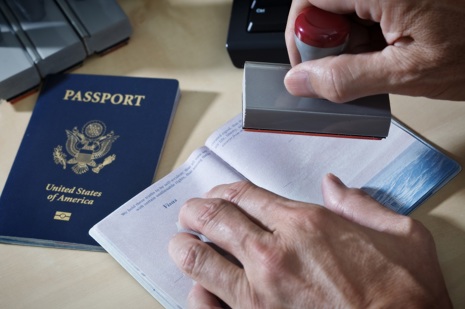
INADs, short for inadmissible passengers, are a rare occurrence, but when they do arise, their consequences can be substantial. Put simply, INADs are passengers who are refused admission to a state by its authorities or onward travel during transit. This article gives an overview on what INADs are, why they face entry denial, and the repercussions that follow.
It's important to differentiate INADs from deportees and off-loaded passengers. Deportees are individuals who are forcibly removed from a country due to legal violations, whereas off-loaded passengers are denied boarding by airlines before departure.
Airlines encounter both controllable and non-controllable reasons for INADs. Controllable reasons involve situations where airlines have sufficient information to prevent boarding correctly, while non-controllable reasons occur when airlines lack essential elements to realistically prevent boarding. According to a major airline, non-controllable INADs make up 80% of cases.
Over the past decade, airlines have observed an increase in INADs. However, in proportion to the number of transported passengers, some airlines have substantially reduced their INADs. This success is partly attributed to improved tools and the adoption of automated systems like Timatic AutoCheck. Certain airlines have made significant investments in these tools, which have proven beneficial.
Moreover, some major destinations, such as the United States, Canada, and Korea Rep., have transitioned to interactive vetting, significantly enhancing passenger acceptance.
Regrettably, the use of advanced tools did not prevent an increase in INADs during the COVID-19 pandemic for most airlines. Many INAD cases were linked to improper health documentation, with non-compliant tests being a primary trigger. Airlines even witnessed some of their passengers being denied entry into their own countries, deviating from their obligations as ICAO member states and their responsibility to admit their own citizens. Airlines grappled with constantly changing regulations while bearing the consequences of INADs, with all their associated implications.
While the severity varies, the United States, Mexico, Germany, and the United Kingdom are commonly cited by airlines as countries where INADs are most prevalent. Although INADs represent less than 1% of transported passengers, they have a substantial financial impact on airlines. Penalties imposed by most countries range from $1,000 to $2,500 per case, with some nations imposing even stricter fines, amounting to $10,000 per violation. While the extent of these fines varies among airlines based on their passenger volume and destinations, some major carriers face fines of up to $2 million annually.
In addition to fines, airlines are responsible for covering all associated costs related to INADs. These expenses encompass meals, accommodation, transportation, security, medical escorts, translation services, detention, and more. Furthermore, airlines suffer revenue losses due to seat spoilage. This is because airlines often bear the responsibility for removing INADs, including custody and care of the passenger from the moment they are deemed inadmissible until their return to the aircraft.
While most airlines attempt to recover costs from passengers, some go to the extent of barring future travel until these expenses are recouped. However, this often proves to be a futile endeavor, leaving airlines to endure the financial consequences of INADs.
For passengers, the INAD experience is far from pleasant. The stress stemming from rejection, the time wasted in detention, and the financial losses incurred can be overwhelming. No one likes to face rejection, especially when they believe they have committed no wrongdoing.
On the immigration side, agents face the challenging task of balancing entry flows between safety and efficiency while ensuring compliance with entry regulations. Over the last three years, an average of seven daily INADs was reported at one major international airport. While this may appear insignificant, INADs have a direct impact on a country's operations and reputation.
To reduce INADs, states and airlines must comprehend their obligations, cooperate effectively, and communicate clearly. Timely communication of entry regulations to the airline industry, reflected in systems like Timatic AutoCheck, can prevent misunderstandings. The information displayed in these systems needs to be accurate and easily interpretable.
In summary, reducing INADs necessitates a collective effort involving all stakeholders in the travel process. While technology and improved communication systems have made significant strides, ongoing cooperation and adherence to regulations are essential to enhance security, flexibility, and border integrity. Communication and cooperation are pivotal on the journey to minimize INADs.